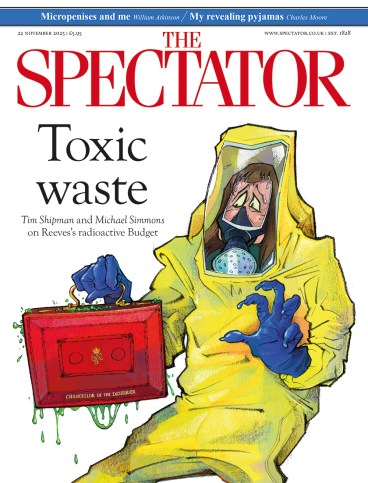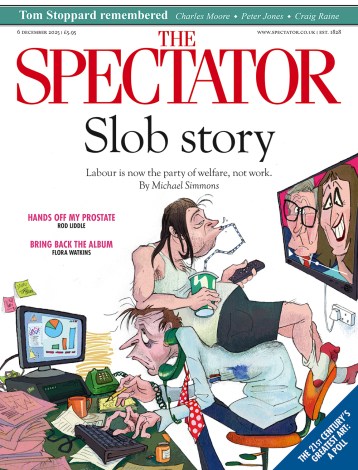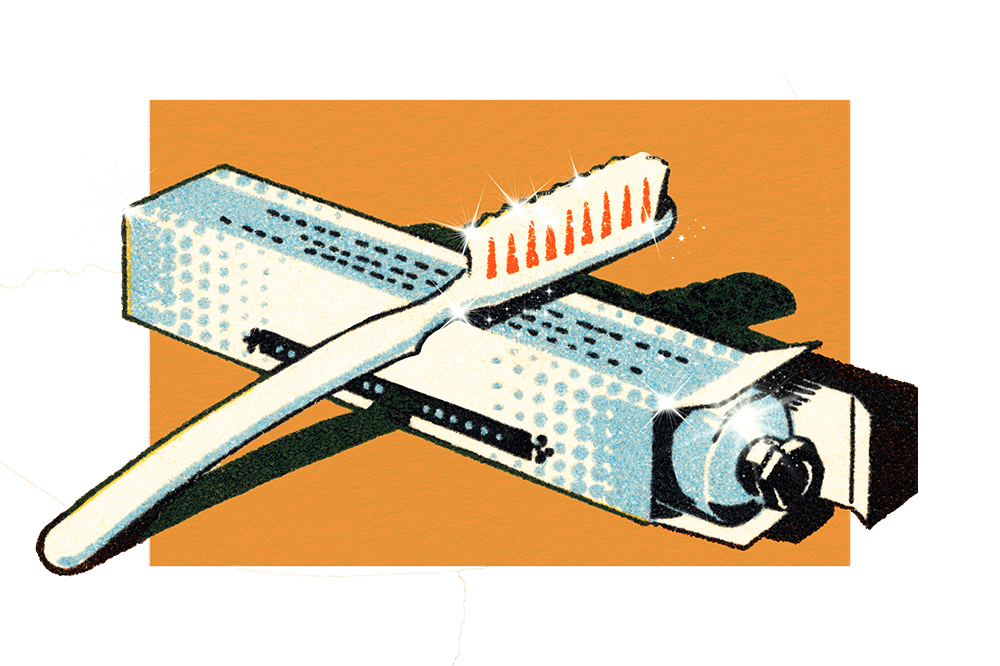
Time was, you didn’t look forward to going to the dentist. Even for routine stuff, your highest aspiration would be to get it over as quickly as possible with as little unpleasantness as possible. Most of the procedures seem pretty mechanical, including having the most sensitive bits of your teeth scraped with a metal thing.
That was what I thought before I encountered Anti-Ageing Dentistry at the Nejati clinic in Belgravia, where the founder – it seems wrong to call Brandon Nejati a mere dentist – talks about ‘pampering’. This is where a really expensive luxury spa meets dentistry and it’s the most obvious example of how oral care is changing. Brandon’s wife, Mahsa – they’re from Iran – talks about the Oral Hygiene Treatment Wellbeing Experience as a ‘facial for teeth’. You get the cleansing, the serum, the LED light therapy (all standard in facials), and at the end, she promises, ‘your teeth will feel fantastic’. They do. This being Belgravia, it’s all holistic, which means there’s an in-house acupuncturist as well as the usual specialists.
‘Picture your typical cleaning session transforming into a spa-like wellness journey,’ says the clinic’s blurb. The place is all curves, light oak panelling and incense. There’s music. You get a herbal drink in a stoneware cup while you wait, and watch a relaxing film of a jungle scene in which even the frog on a twig looks chilled.
The normal dentist experience is absent until you lie in the chair. I had the Oral Hygiene Treatment. Mahsa sprays ultra-fine salt and minerals onto the teeth with a Swiss machine ‘to cleanse its pores with a soft touch’ – just like a facial. Because my teeth have so much deposit (probably a euphemism for plaque), she uses a different grade of salt as a descaler: no metal scrapers here. It’s antiseptic, she says, and gets under the gum to prevent inflammation and get at bacteria. She applies two different cleansing serums, one with rosemary and thyme, another with a little peroxide – to suffocate, she says, the bad bacteria. Then there’s the LED light to warm up the serum so it penetrates the pores of the gums and the enamel. That goes on for ten minutes. I don’t know what it’s doing but none of it hurts.
There’s a lot of talk about bacteria, bad and good. The salt treatment (which isn’t salty) preserves the good stuff, for the philosophy here is that the mouth is the gateway to the body. ‘Our approach in this practice,’ says Mahsa, ‘is that everything that grows in the mouth, especially the harmful bacteria, will travel to the rest of the body. And they can cause systemic diseases.’ Two recent papers suggest that bad bacteria from the mouth can be a factor in Parkinson’s disease and Alzheimer’s. ‘The whole thing is about balance in the mouth,’ she says. Gum health is a big thing. ‘When you have inflammation in your mouth, your body is working overtime to make sure that infection doesn’t spread to the rest of your body. So you feel run down, you feel tired.’ Maybe. Tiredness is the human condition these days.
Like a spa, there are products in soft-lit displays, and they look more like skincare in tubes than toothpaste – white, cinnamon-coloured and pinkish. These, says Brandon, have minerals in them and are designed to be used morning and night, with an all-day one for whitening. They come with a brush: a take-home tip is to use a soft brush in circular movements; the other is not to rinse off the toothpaste, so it carries on working. There are lots more products coming up, including an LED kit to use at home on the teeth, like the LED face masks that are everywhere now. ‘We’re the first to apply the principle to the teeth,’ Brandon tells me.
As for aesthetics, which is what drives many clients here, Brandon winces when you mention Turkish teeth. It’s all about artistry: Brandon builds up microlayers of a composite that includes porcelain particles, opaque at the bottom, translucent at the top. He shows me pictures of before and after teeth, including one of a famous politician and a big business leader (frustratingly, it’s hard to identify people from teeth alone); he uses a softer contour for women, a harder outline for a masculine look. Gendered teeth; there’s a thing.
What struck me was that he didn’t, like another dentist I visited, profess himself fascinated by my unworked-on wonky teeth. Rather, he remarked that they were good teeth, but if I wanted, I could repair a break in the front.
It’s expensive, at £795 to £1,500 a tooth for microlayering. The toothpaste with brush is £65; the Oral Detox £179. It’s all fabulous and a world away from the dental care that most people get. For the lucky few, there are cutting edge clinics; for the NHS-dependent, it’s just luck if you can find a health service dentist at all. The gap between rich and poor starts as soon as you open your mouth.








Comments